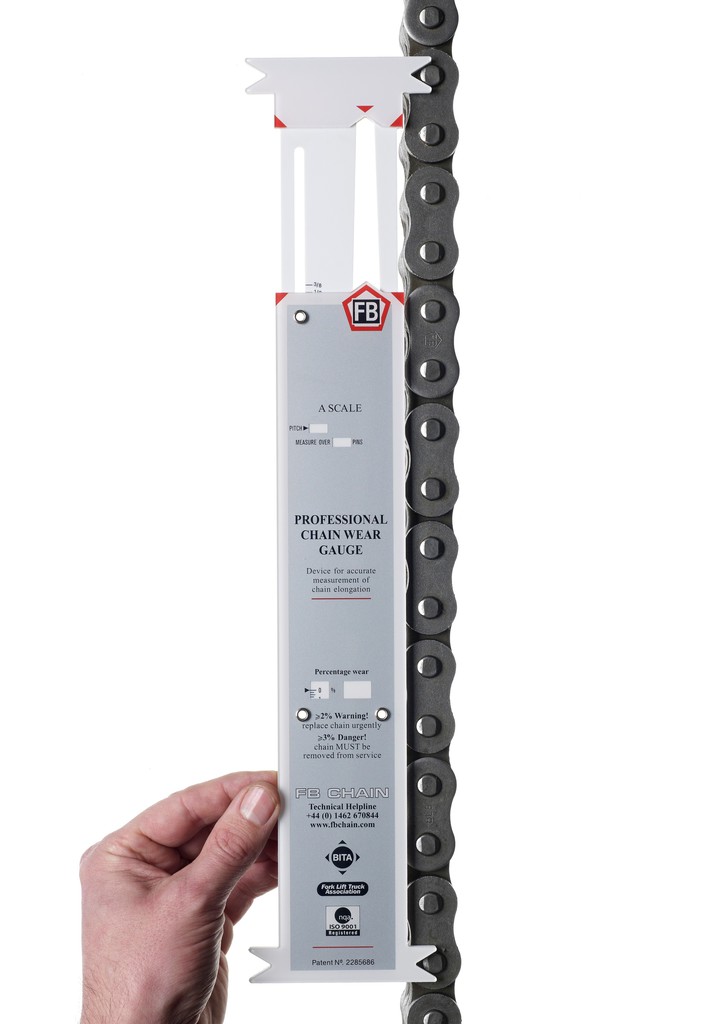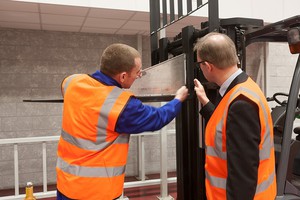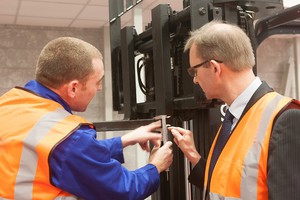

|
Edward Lowton
Editor |


|
| Home> | Handling and Storing | >Lift trucks & ancillaries | >Chain gauge recommended |
Chain gauge recommended
09 December 2016
According to Mike Mathias, chairman of CFTS, the best way to monitor and measure potentially dangerous chain wear is using a precision, self-calibrating chain wear gauge, rather than a steel rule or tape.

CFTS favours the chain gauge because its V-shaped jaws always give positive location on the pins, so that readings are always from the pin’s centre. This means results are both consistent and repeatable.
By contrast, using a tape or steel rule requires a totally steady hand, along with very precise visual alignment, which, depending on the position of the inspector’s eyes, can result in a parallax error. In the field this makes it almost impossible to achieve genuine consistency.
Mathias says: “The need for accuracy is crucial because 0.25% wear measures just 0.75mm over 300mm. This can be the difference between an acceptable level of wear and a truck being taken out of commission.
“Our examiners report that the chain gauge is also very customer-friendly. Because the percentage wear is directly visible in a window, everyone can clearly see the results clearly and understand the full extent of chain wear. By contrast, using a tape or rule means the inspector has to work out a complicated calculation: (X=(L-(PxN)) x100 / (PxN) where P= the pitch of the chain; N= pitches measured; L= measured length and X= percentage wear).
“Requiring the use of a self-care chain gauge is just one example of the methodology that sets CFTS Thorough Examinations apart. Anyone who sees our examiners on-site will notice that they come fully equipped to examine all key components on the truck (including steering, brakes etc) not just the lifting gear.
“That’s because CFTS examinations cover both LOLER and PUWER – as recommended by the HSE. So you’ll often seen a CFTS examiner jacking up the truck, using an A-frame ladder to check the chain in crucial areas, such as where it passes over the mast rollers.
“It’s all part of our drive to ensure that lift trucks are fit for purpose, protecting not only those who work on and around trucks but the company itself.”
- Industry body raises concerns over Thorough Examination of attachments
- Thorough Examination: Beware half measures
- Highlighting the wider effects of equipment failure
- CFTS expands technical support
- CFTS Chairman appointed
- What happens in an HSE inspection and what sounds alarm bells?
- Good practice is spreading
- CFTS board appointment
- Telehandler accident exposes management failings
- Truly local service from CFTS



















